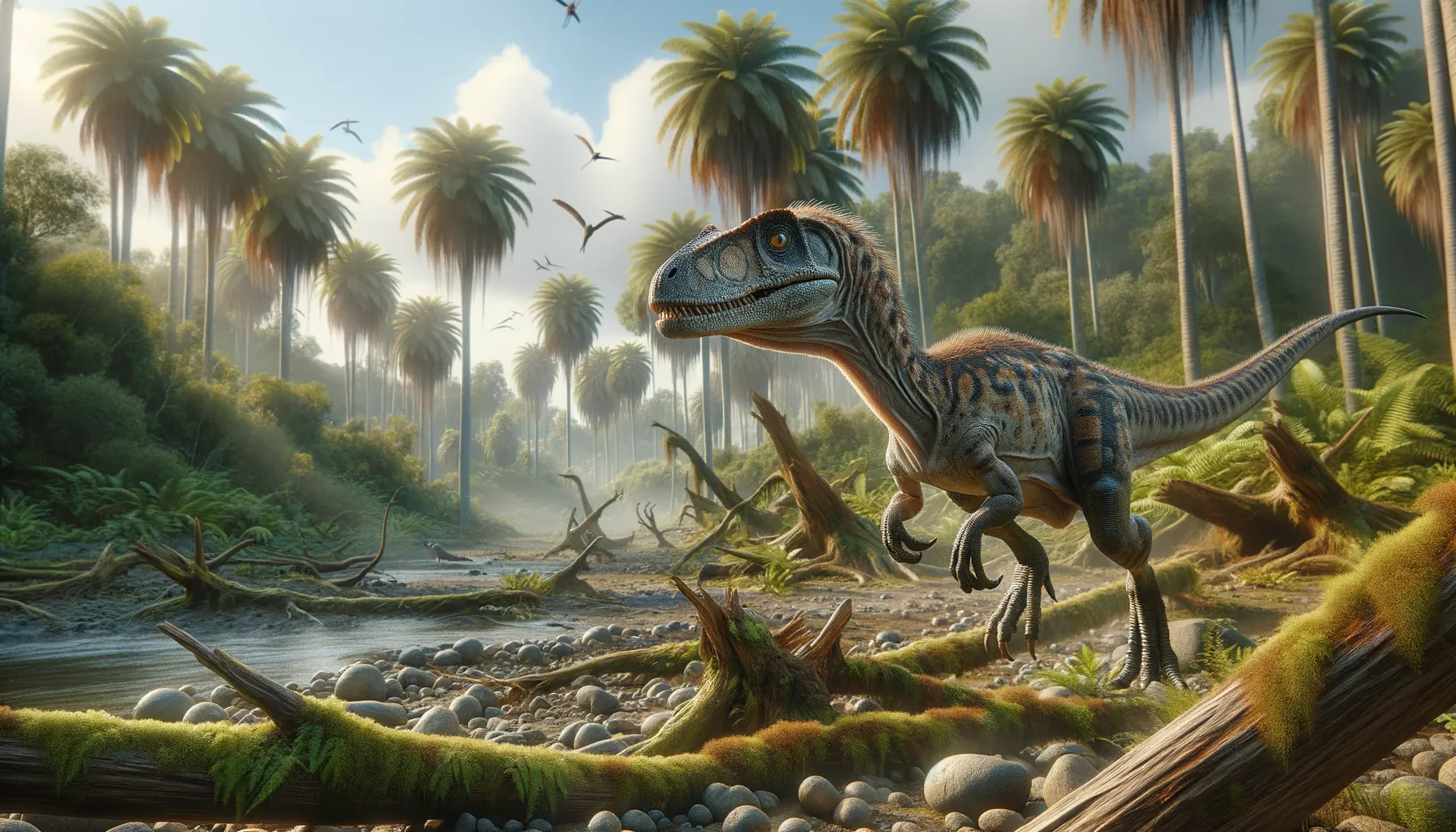
Fukuivenator
A nimble predator with a curious twist!
Period
Cretaceous
Length
Roughly 2.5 meters long.
Height
Approximately 0.9 meters tall.
Weight
Around 25 kilograms.
Fukuivenator was a small, agile theropod dinosaur that lived in what is now Japan during the Early Cretaceous period. It belongs to a group called therizinosaurs, known for their unique physical traits. With a body length of about 2.5 meters, this dinosaur likely had feathers and a relatively lightweight build, which would have aided its mobility as it navigated its environment, possibly foraging and potentially hunting small prey.
Diet
Fukuivenator was likely omnivorous. It had teeth that suggest it could eat both plants and small animals, making it quite flexible in its dietary habits.
Hunting
This dinosaur possibly hunted small prey, like insects or small vertebrates, using its quick movements. Its agility could have helped it to catch elusive or skittish targets.
Environmental challenges
Fukuivenator lived in a dynamic Earth with frequent volcanic activity and shifting climates. This environment demanded adaptability, as sudden changes could impact available resources. Being a smaller dinosaur, it might have had to watch for larger predators and seek shelter during adverse weather conditions. There were also geophysical changes that influenced the landscape distribution and vegetative cover where it lived.
Speed
Moderate runner, likely swift for its size.
Lifespan
Estimated around 10-20 years.
First discovery
Discovered in 2007 in Japan.
Fun Facts
- Fukuivenator was a small, feathered dinosaur discovered in Japan.
- The name Fukuivenator means 'Fukui hunter', named after the Fukui Prefecture where it was found.
- It lived during the early Cretaceous period, around 120 million years ago.
- Fukuivenator is estimated to be about 2.5 meters long, making it a relatively small dinosaur.
- Unlike many other dinosaurs, Fukuivenator is believed to have been an omnivore, meaning it ate both plants and small animals.
- Its discovery has provided valuable insights into the diversity of small dinosaurs in Asia during the Cretaceous period.
Growth and Development
Fukuivenator's development may have involved stages where it underwent rapid growth, especially during its juvenile phase, to quickly reach a size that minimized predation risk. Its growth patterns could have been influenced by environmental factors such as food availability and climatic conditions. The skeleton's ability to develop at different rates, possibly adjusting diet and behavior as needed to ensure survival, was essential.
Habitat
This dinosaur lived in what is now known as Japan's Fukui Prefecture, an area with lush plant life during the Early Cretaceous. It possibly inhabited forested regions where it could find cover and food. Streams, rivers, and seasonal pools could have been prominent features of its habitat, offering water sources vital for survival. These environments supported diverse life forms, from plants to small prey.
Interaction with other species
Interactively, it may have competed with other small theropods and early mammals for food resources. Symbiotic relationships could have existed, such as with insects, where its feeding habits might have inadvertently aided plant pollination processes. As it shared its habitat with different species, some interactions might have led to opportunistic hunting or scavenging.
Natural lifespan
Fukuivenator's natural lifespan was likely between 10 and 20 years.
Reproduction
As with many dinosaurs, Fukuivenator likely laid eggs. Nesting behavior would have been crucial for protecting its offspring against natural threats. Parental care in protecting the eggs, either through incubation or hiding nests, may have influenced hatchling survival rates. Reproductive strategies were possibly impacted by environmental conditions such as climate and predation risk.
Social behaviour
Fukuivenator's social behavior might have included solitary foraging or small group living to maximize resource sharing. Social interactions could have influenced territorial disputes during periods of low resources. Communal nesting might have been a strategy to reduce predator-related risks. Vocalizations or visual signals might have been used for communication within its social interactions.
Fossil locations
Fossilized remains of Fukuivenator have been found primarily in Japan’s Fukui Prefecture. These discoveries have provided significant insights into theropod diversity in Asia during the Early Cretaceous. The specific strata suggest period-specific fauna and flora coexistence. Its skeletal remains offer a snapshot of its anatomical structure and paleontological context within the region.
